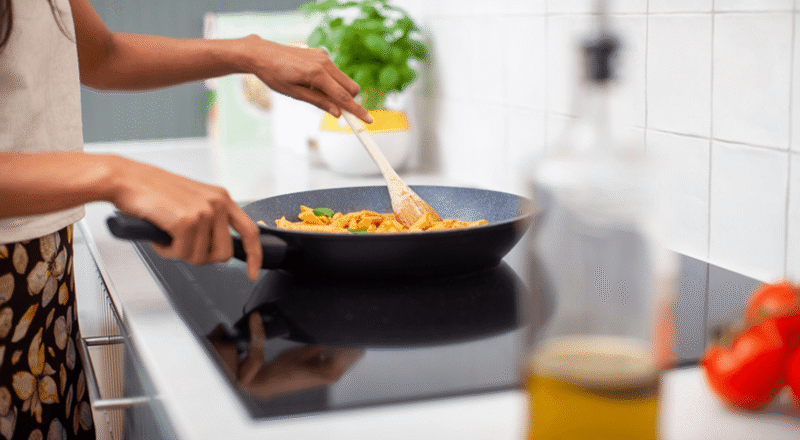Cooking with cast iron on induction cooktops has become increasingly popular due to its efficiency and precision. However, it’s crucial to use trivets or pads under cast iron on induction to ensure both the cookware and the cooktop remain in optimal condition. This article explores the reasons why using trivets or pads is important and provides guidance on choosing the right ones for your kitchen.

Why Use Trivets or Pads Under Cast Iron?
Induction cooktops generate heat using magnetic fields, which can cause cast iron pans to heat up quickly and retain that heat for longer periods. While this is excellent for cooking, it can also lead to potential damage to the cooktop surface. Trivets or pads serve as a protective barrier, preventing scratches and minimizing the risk of cracking due to temperature fluctuations.
Protecting Your Induction Cooktop
Prevention of Scratches
One of the primary concerns when using cast iron on an induction cooktop is scratching the cooktop surface. Cast iron is heavy and can be abrasive, leading to unsightly marks. By using a trivet or pad, you create a buffer that protects the delicate glass surface. For more tips on avoiding scratches, check out avoid scratches.
Managing Heat Distribution
Another benefit of using trivets or pads is that they help distribute heat more evenly. This can be especially useful when searing meat or making pizza in a cast iron pan. To learn more about these techniques, visit searing meat and making pizza.
Choosing the Right Trivet or Pad
Material Considerations
When selecting a trivet or pad, consider materials like silicone, ceramic, or heat-resistant fabric. These materials provide adequate insulation and are less likely to transfer heat to the cooktop. Ensure the material can withstand high temperatures, as cast iron can get very hot during cooking.
Size and Shape
Choose a trivet or pad that matches the size of your cast iron cookware. It should be large enough to cover the base of the pan but small enough not to interfere with the induction cooktop’s magnetic field.
Maintaining Your Cast Iron Cookware
Proper maintenance of your cast iron cookware is vital to ensuring its longevity and performance. After using your cast iron on an induction cooktop, follow these steps for optimal care:
Cleaning Tips
After cooking, clean your cast iron with warm water and a mild detergent. Avoid soaking it for long periods, as this can lead to rust. Dry it thoroughly and apply a light coat of oil to prevent rusting. For more on seasoning and storage, consider reading seasoning tips and storage tips.
Regular Seasoning
Season your cast iron regularly to maintain its non-stick properties. This involves applying a thin layer of oil and baking it in the oven for an hour. Regular seasoning ensures that your cookware remains in top condition and ready for use.
Additional Resources
For more information on using cast iron over various heat sources, you can visit Lodge Cast Iron. Additionally, for a deeper understanding of how induction cooktops work, check out How Stuff Works.

FAQs
What are the benefits of using trivets or pads under cast iron?
Using trivets or pads helps prevent scratches, manages heat distribution, and protects your induction cooktop from potential damage.
Can I use any type of trivet or pad?
It’s best to use trivets or pads made from heat-resistant materials such as silicone, ceramic, or fabric to ensure optimal protection and performance.
How do I maintain my cast iron cookware?
Clean it with warm water and mild detergent, dry it thoroughly, and apply a light coat of oil. Regular seasoning is also recommended to maintain its non-stick properties.
This article contains affiliate links. We may earn a commission at no extra cost to you.

